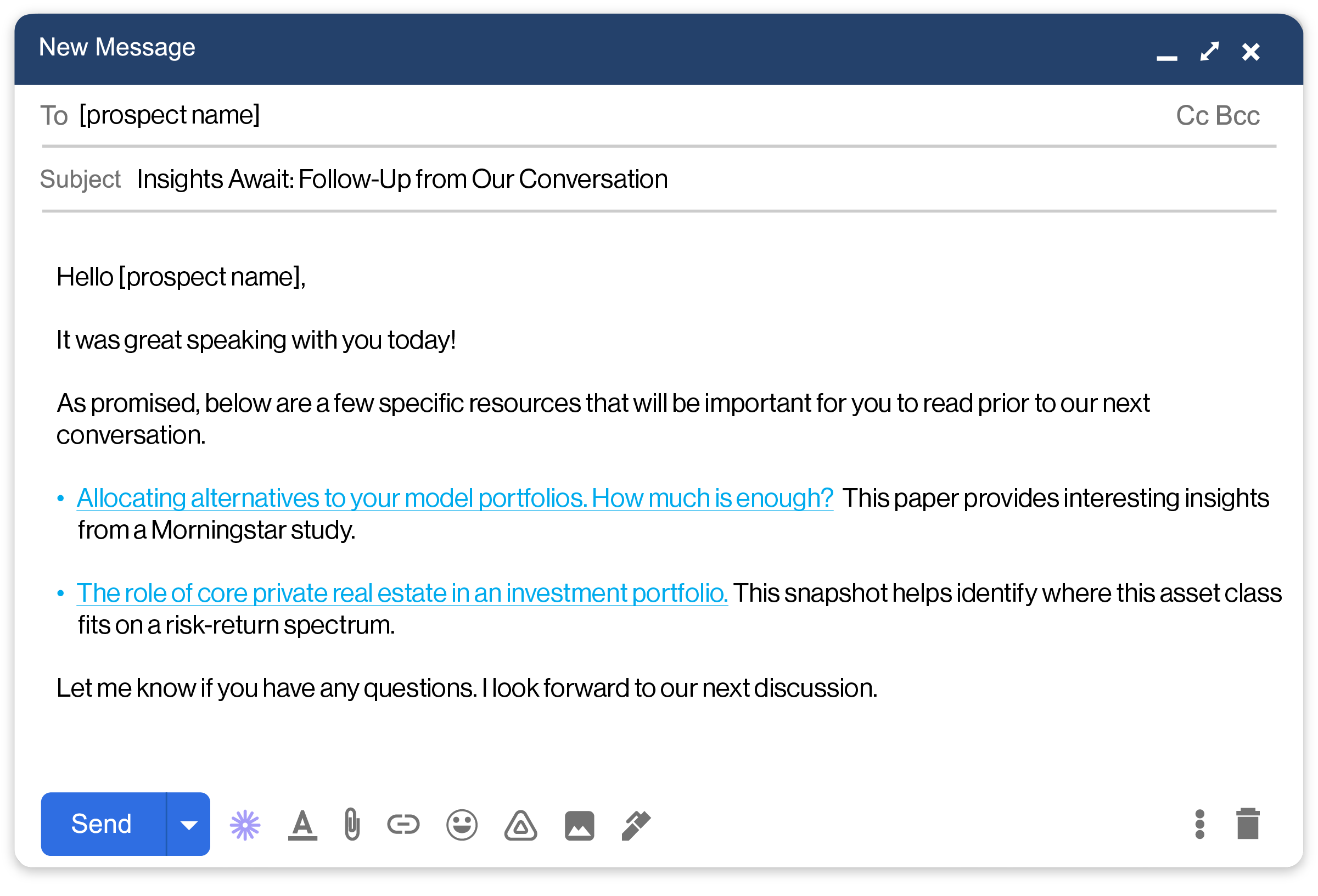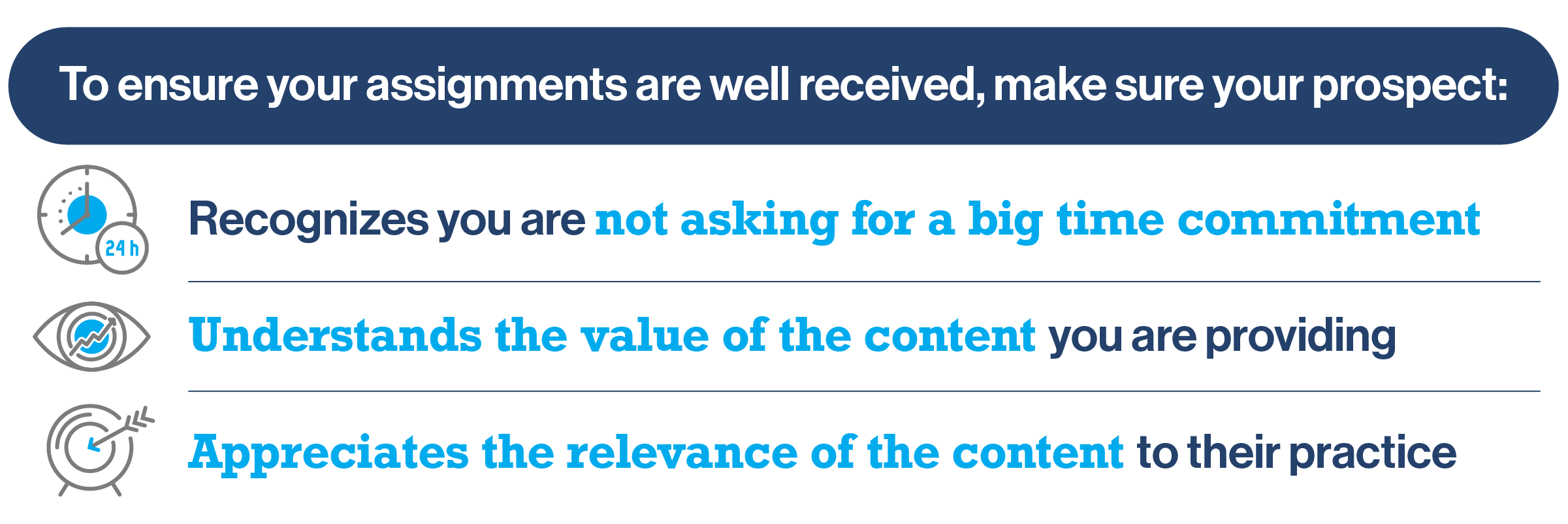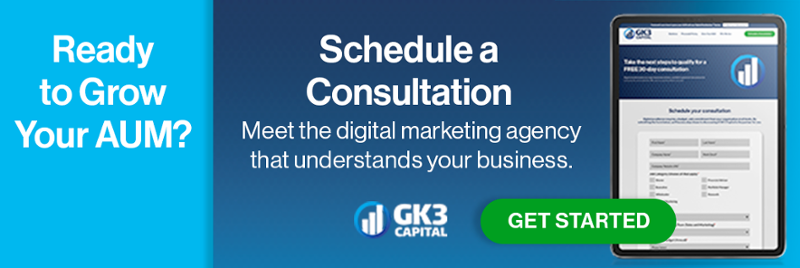As an experienced wholesaler, you know well the meaningful role that content can play in your selling success. In fact, you have used product literature as a cornerstone of wholesaling to advisors for years. You also have used other forms of educational or value-added content to help convey certain concepts that your advisors find valuable. In essence, content is an essential tool of your trade.
Yet, many asset management firms where a communication gap exists between sales and marketing, miss a powerful opportunity for their wholesalers to use content in a manner that can significantly accelerate the sales cycle. This article explores how you can capture that opportunity.
Enter Assignment Selling
Assignment Selling is a sales technique where the salesperson provides potential customers with educational content, resources, or assignments to complete before a sales meeting or during the sales process.

The educational content often addresses common questions, concerns, or challenges that the prospect might have, thereby positioning the salesperson as a helpful advisor rather than just a seller. This method aims to increase the efficiency of the sales process, build trust, and ultimately lead to higher conversion rates by aligning the salesperson's expertise with the prospect's needs.
It’s Really Nothing New
The reality is, as a top-producing wholesaler, you’ve been using a version of Assignment Selling much of your career, you just didn’t have a name for it. Content has always been complimentary to your selling efforts. Unfortunately, you haven’t been able to extract the utmost value from it, because it wasn’t always the right content.
Note the earlier phrase, “content [that] often addresses common questions, concerns, or challenges.” Chances are your marketing team has not developed a series of pieces (videos, blogs, infographics, whitepapers, research reports) that specifically address the common objections you frequently hear from advisors.
Getting You Equipped
When your sales leadership can work with your marketing professionals to create content that helps you overcome advisor objections, then you are on track to get the most out of Assignment Selling. By identifying the 8-10 most frequently heard concerns about your products or investment strategies your marketing team can create a series of thoughtful, balanced responses to those concerns.
Equipped with these pieces you now have a full quiver of arrows you can strategically use to deliver the right content at the right time to your advisor. That’s powerful because a well-informed advisor is much more willing to meet with you in person.
Assignment Selling in Action
Assignment Selling is easier than you might think, and as mentioned earlier, you have been using a form of this approach for years. The only difference is in the way you deliver content. Previously, you shared marketing content with advisors that was germane to conversations you had. With Assignment Selling you assign content for your advisor to consume. There’s a difference. For example, a communication using Assignment Selling would sound like this when you are beginning to qualify a prospect:
.png?width=2401&height=1642&name=34682%20GK3%20blog%20graphic%202%20(1).png) Or, after establishing an initial relationship with an advisor, an Assignment Selling communication could be:
Or, after establishing an initial relationship with an advisor, an Assignment Selling communication could be:

Will Advisors Resist?
You might be wondering how your advisors will react to being assigned tasks you expect them to complete. That’s a legitimate question because you are asking the advisor to do more work, and they could be questioning the sincerity of your intentions. Yet our experience has shown that when Assignment Selling is executed properly, it’s unlikely you’ll meet much resistance. And if you do, that could be a signal that an advisor prospect is ready to “opt out.”

Wrapping Up
We trust you’ve found this blog helpful in highlighting a powerful, yet often-underutilized sales tactic that can leverage content to the greatest extent possible for you to earn the attention of new prospects and ultimately convert them to clients.
Topics: Content Digital Marketing Digital Distribution Asset Management Website Sales Enablement CRM Automation Lead Generation Technology


.png)
